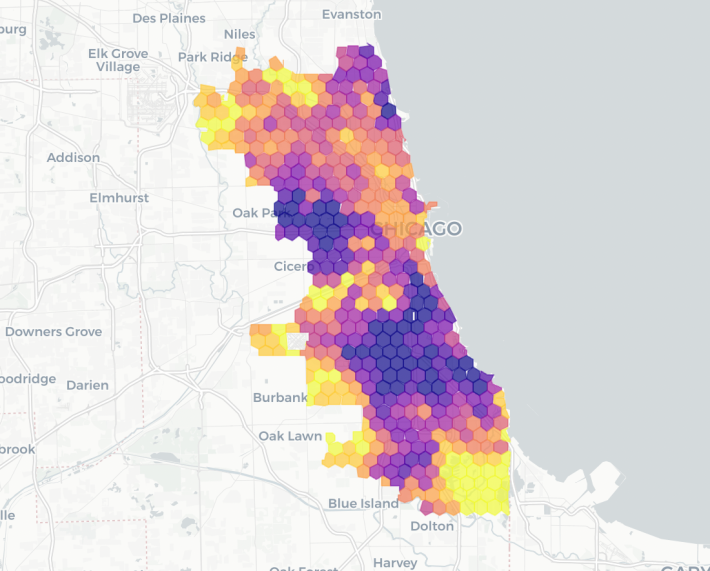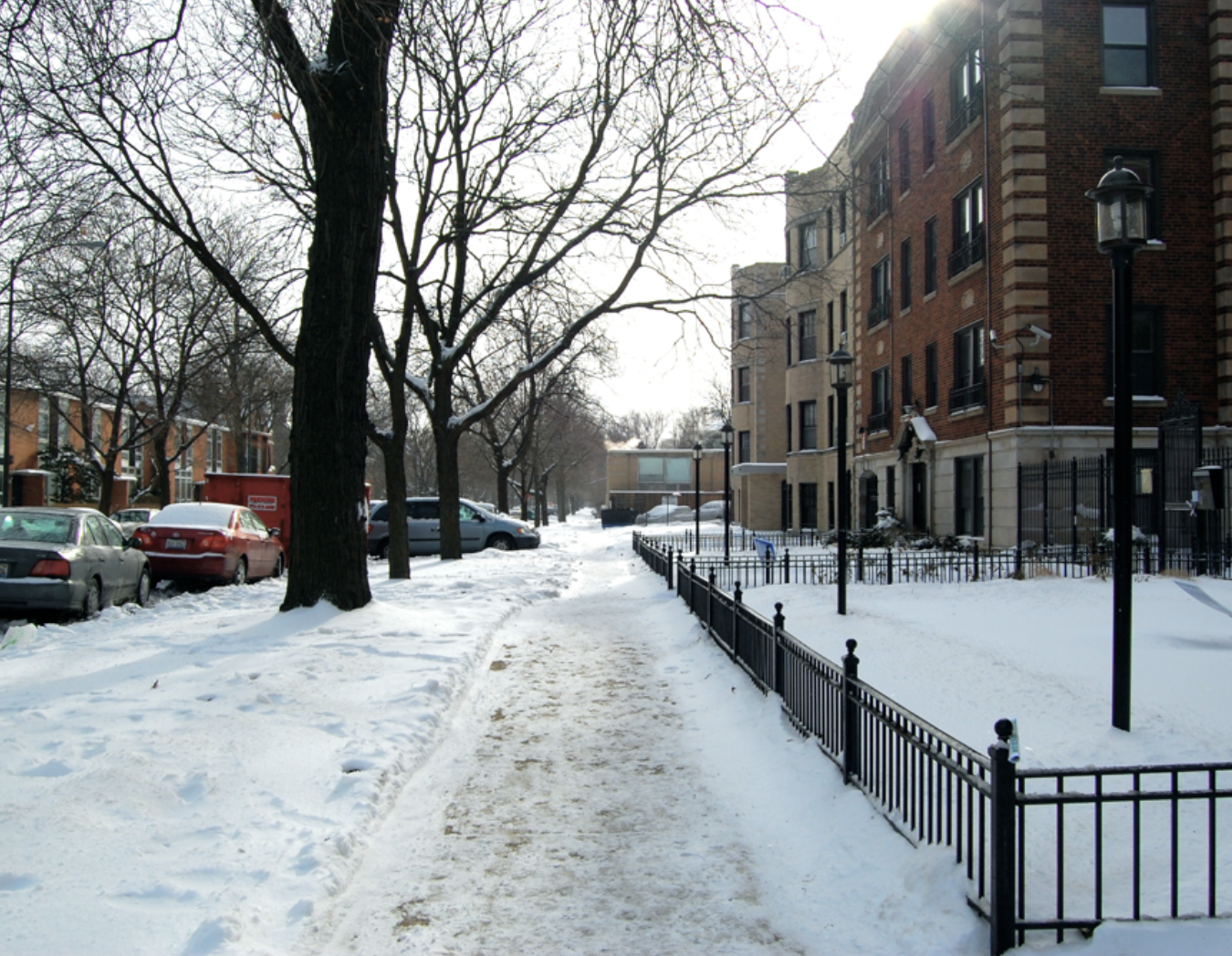At tomorrow's City Council meeting, Ald. Gilbert Villegas (36th Ward) plans to introduce the Chicago Plow The Sidewalks Pilot Program ordinance, which was originally proposed by the disability rights group Access Living, the transportation advocacy organization Better Streets Chicago, and other supporters. The goal of the legislation is to try out municipal clearance of snow and ice from the city sidewalks, instead of leaving that task to individual property owners, who often fail to fail to shovel their walkways in a timely manner, creating a mobility barrier for vulnerable residents.
"We all benefit from a transportation system that is universally accessible," Better Streets' Michael Podgers told Streetsblog. "While people with ambulatory and vision disabilities will see the most immediate benefit, municipal sidewalk plowing will also benefit seniors, families with children, delivery workers, small businesses and more."
"Even if a block is 90 percent shoveled, the 10 percent that's not cleared of snow makes that sidewalk inaccessible," Podgers added. "Sticking with the system the city currently relies on, which leaves lots of sidewalks not even remotely cleared, means a lot of sidewalks are inaccessible. That shuts down a significant part of the city's transportation system for thousands of different people annually."
Podgers noted that there are best practices from many other North American municipalities Chicago can use as a model. "Toronto and Montreal, Canada's two largest cities, both have city-wide municipal plowing programs already in place," he said. "We've even had the opportunity to speak with people who manage Toronto's program. They're doing it for the most part with off-the-shelf plows and take advantage of standardized street layouts, a trait Chicago shares." He added that Rochester and Syracuse, New York also have city-run sidewalk clearance program. "Syracuse is not a particularly affluent city, but the service is worth the money spent." Forest Park and Wilmette are examples of Chicago suburbs where the municipality clears sidewalks.
"Chicagoans deserve the ability to move about the city and participate in our local economy," Villegas told Streetsblog He added that during last year's budget season, advocates asked for a budget amendment to fund a pilot. Since the request was so late, the timing didn't work out, so they decided to develop an ordinance to fund the pilot.
Last fall the Better Streets and Access Living proposed a $750,000 pilot project that would include six roughly 2.5-square-mile districts, including both main streets and residential roadways. They identified 15 potential pilot zones. Each district would have included parts of multiple wards.
Today Podgers confirmed the pilot is still designed to cost about $750,000, but the ordinance is written to be flexible in terms of the amount of money that would be spent on the initiative. "As the pilot is implemented we want to work in collaboration on potential funding sources with alders and City Hall since the pilot is such a small percentage of the budget."

Once the ordinance is introduced, it will be assigned to a City Council committee such as Pedestrian and Traffic Safety. If the committee votes to approve the legislation, it will head to the full Council for a final vote.
Read more about the proposal on the Better Streets and Access Living websites.
Here's a list of City Council members besides Villegas who supports PTS:
● Ald. Daniel La Spata (1st Ward)
● Ald. Anabel Abarca (12th Ward)
● Ald. Jeanette Taylor (20th Ward)
● Ald. Michael Rodriguez (22nd Ward)
● Ald. Byron Sigcho-Lopez (25th Ward)
● Ald. Rossana Rodriguez (33rd Ward)
● Ald. Carlos Ramirez-Rosa (35th Ward)
● Ald. Gilbert Villegas (36th Ward)
● Ald. Andre Vasquez (40th Ward)
● Ald. Timmy Knudsen (43rd Ward)
● Ald. Matt Martin (47th Ward)
● Ald. Maria Hadden (49th Ward)
● Ald. Debra Silverstein (50th Ward)
Here are other organizations endorsing the proposal:
● AARP – Illinois
● Active Transportation Alliance
● AIDS Foundation Chicago
● BPI
● Center for Neighborhood Technology
● Chicago, Bike Grid Now!
● Chicago Family Biking
● Chicago Jobs with Justice
● Commuters Take Action
● Elevated Chicago
● Equiticity
● Freedom to Move Coalition
● Independent Drivers Guild of Illinois
● Indivisible Lincoln Square
● Jewish Council of Urban Affairs
● Lurie Children's Hospital
● Metropolitan Planning Council
● Northwest Center
● Palenque LSNA
● Shared Use Mobility Center
● The Southwest Collective
● Transportation Equity Network
● Urban Environmentalists Illinois
● Westside Justice Center






